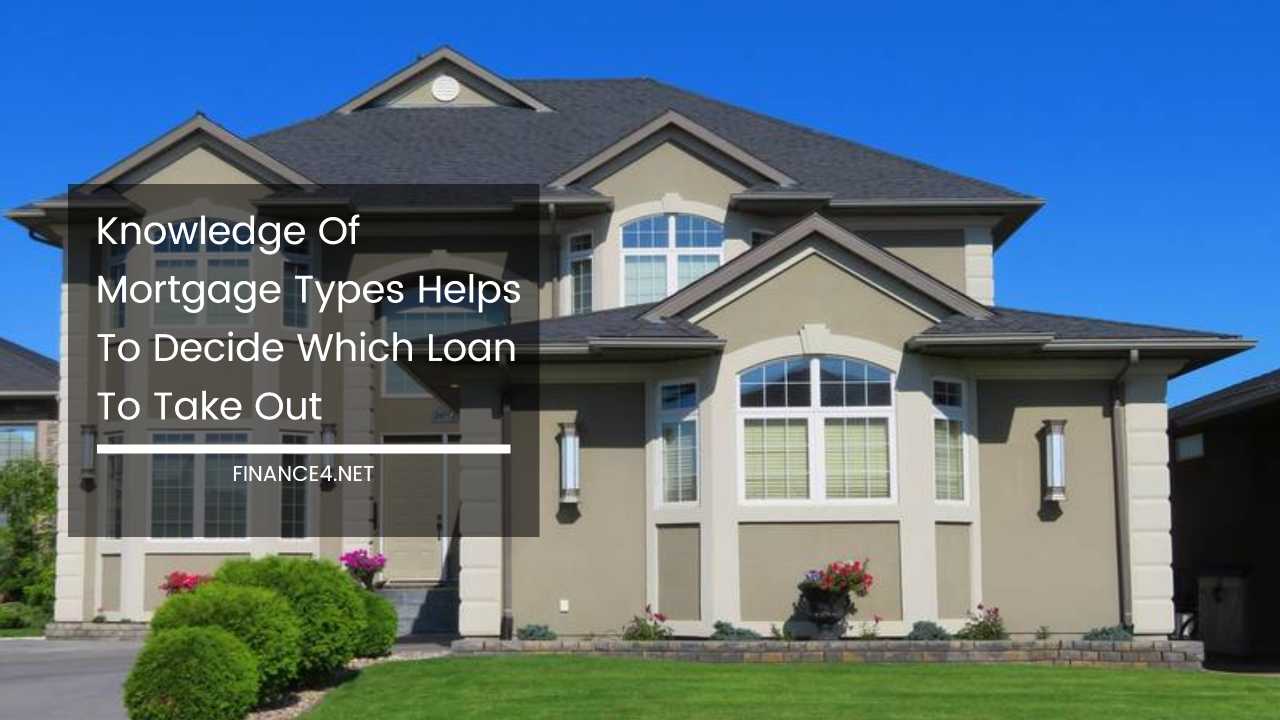Unlock Your Dream Home: A Guide to Mortgage Loan Types

Owning Your Dream: A Comprehensive Guide to Choosing the Right Mortgage
Purchasing a home marks a momentous occasion, symbolizing stability and a stepping stone towards building wealth.
However, navigating the mortgage landscape can feel overwhelming. Selecting the right mortgage loan is crucial for ensuring the financial sustainability of your dream home.
While consulting a qualified mortgage professional is highly recommended, empowering yourself with knowledge equips you to make informed decisions.
This comprehensive guide unveils six common mortgage options, explores additional considerations beyond loan types, and empowers you to choose the loan that best aligns with your financial goals and circumstances.
Unveiling the Mortgage Tapestry: 6 Loan Options for Tailored Financing
Mortgages extend their reach beyond simply financing home purchases. They can be utilized for renovations, debt consolidation, or simply accessing cash by leveraging the equity you’ve built in your property. Let’s delve deeper into six prominent mortgage types:
-
Fixed-Rate Mortgage (FRM): A cornerstone of mortgage products, FRMs offer stability with a locked-in interest rate that remains constant throughout the entire loan term. This predictability allows for easier budgeting as your monthly payments won’t fluctuate due to changing market conditions. FRMs are available in various terms, typically ranging from 10 to 30 years, with some lenders even offering extended 50-year options. This flexibility allows you to tailor the loan duration to your financial situation and risk tolerance. FRMs are ideal for those seeking peace of mind and protection against rising interest rates, especially if you plan to stay in the home for a long period.
-
Adjustable-Rate Mortgage (ARM): ARMs provide initial flexibility with a fixed interest rate for a pre-determined introductory period (often 3, 5, or 7 years). This initial rate is typically lower than what’s offered with FRMs, potentially making ARMs attractive for first-time homebuyers or those anticipating short-term ownership. However, after the introductory period ends, the interest rate adjusts periodically based on a market index. While these adjustments can sometimes lead to lower rates if the market dips, the potential for significant future rate hikes poses a risk that could significantly increase your monthly payments. ARMs are best suited for borrowers who are comfortable with potential payment fluctuations and who anticipate selling the property before the introductory fixed-rate period ends.
-
Interest-Only Mortgage (IO): This unique option offers a grace period during the initial years of the loan, typically 5 to 10 years. During this grace period, you only pay the interest accrued on the loan. This translates to lower monthly payments initially, potentially freeing up cash flow for other needs such as furnishing your new home or making renovations. However, it’s crucial to remember that you won’t be paying down the principal amount during this period. Once the grace period ends, your monthly payments will increase significantly to cover both the accrued interest and the principal amount. IO mortgages are suitable for borrowers with high incomes who plan to make lump-sum payments towards the principal later or who intend to sell the property before the end of the IO period. It’s important to exercise caution with IO mortgages, as they can lead to negative amortization if not managed strategically.
-
Home Equity Loan (HEL): Have you built up significant equity in your home over time? A HEL capitalizes on this equity, providing you with a lump sum of cash. This loan is secured by your home, meaning if you default on the loan, you risk foreclosure. HELs are ideal for financing major home improvements, debt consolidation with high-interest debts, or unexpected expenses. The entire loan amount is typically disbursed at closing, and you repay it over a fixed term with fixed monthly payments that include both principal and interest.
-
Home Equity Line of Credit (HELOC): Similar to a HEL, a HELOC leverages your home’s equity. However, instead of a fixed sum, a HELOC functions like a revolving credit line with a pre-determined credit limit. You can borrow funds as needed within that limit, offering greater flexibility for ongoing projects or situations where you might need access to cash periodically. HELOCs often come with variable interest rates, so payments can fluctuate based on the prevailing market rates. HELOCs are suited for ongoing projects or situations where you might need access to cash periodically, such as renovations, ongoing education expenses, or unexpected medical bills.
-
Option ARM Loan: This hybrid loan combines features of ARMs with flexible payment options. Like a traditional ARM, the interest rate adjusts periodically. However, Option ARMs offer the borrower the option to choose how much of the monthly payment goes towards interest and how much is applied to the principal. This flexibility allows you to manage your cash flow strategically. During periods of financial hardship, you can opt for a lower principal contribution, minimizing your monthly payment. Conversely, during times of financial stability, you can allocate a larger portion towards the principal, accelerating the payoff of your loan and reducing your overall interest costs. This degree of control over your payment structure makes Option ARMs a suitable choice for borrowers with fluctuating income or those who anticipate changes in their financial circumstances over the loan term.
Beyond the Basics: Choosing the Right Mortgage for You
Selecting the optimal mortgage goes beyond simply understanding the loan types. Here are some key considerations to factor in when making your decision:
- Interest Rate: This significantly impacts your overall loan cost. Shop around and compare rates offered by different lenders. Don’t hesitate to negotiate for the best possible deal. A lower interest rate can translate to significant savings over the life of the loan.
- Loan Term: The loan term determines the length of your repayment period. Shorter terms result in higher monthly payments but allow you to own your home debt-free sooner. Conversely, longer terms translate to lower monthly payments but extend the interest-paying period, meaning you’ll pay more interest overall. Choose a term that aligns with your financial goals and comfort level. Consider your long-term plans for the property and your expected income trajectory.
- Down Payment: A larger down payment reduces your loan amount and potentially qualifies you for a lower interest rate. This lowers your monthly payments and saves you money on interest over the loan term. Aim to save as much as possible for a down payment to minimize your borrowing costs and build equity in your home faster. There are government programs and some lenders who offer options for low down payments, but these often come with additional fees or higher interest rates. Carefully weigh the pros and cons of these options before deciding.
- Your Financial Stability: Consider your income, debt-to-income ratio (DTI), and overall financial picture. Your DTI is a key metric used by lenders to assess your ability to repay the loan. It compares your total monthly debt payments to your gross monthly income. Generally, lenders prefer borrowers with a DTI below 36%. A stable income and a low DTI ratio will make you a more attractive borrower and potentially qualify you for more favorable loan terms.
- Closing Costs: Factor in closing costs, which can include origination fees, appraisal fees, title insurance, and other expenses associated with securing the loan. Closing costs can vary depending on the lender and loan type. Shop around and compare closing costs to get the best deal. Some lenders offer programs that cover some or all of the closing costs, but these programs may come with a slightly higher interest rate.
Beyond the Numbers: Additional Considerations
While interest rates and loan terms are crucial factors, consider these additional elements for a well-rounded decision:
- Prepayment Penalties: Some mortgages, particularly ARMs, may come with prepayment penalties if you pay off the loan early. If you anticipate making lump-sum payments towards the principal or plan to sell the property before the loan term ends, factor in any prepayment penalties associated with the loan.
- Private Mortgage Insurance (PMI): If your down payment is less than 20% of the purchase price, you’ll likely be required to pay PMI. This is an insurance premium that protects the lender in case you default on the loan. PMI can add to your monthly housing costs. Aim to save enough for a 20% down payment to avoid PMI and save money in the long run.
- Your Long-Term Goals: Consider your long-term plans for the property. Do you plan to stay in the home for a long period or do you anticipate selling within a few years? This can influence your choice of loan term and the importance of features like prepayment flexibility.
- Seek Professional Guidance: While this guide empowers you with knowledge, consulting a qualified mortgage professional is highly recommended. They can assess your financial situation, explain different loan options in detail, and help you choose the mortgage that best aligns with your unique needs and goals.
Owning Your Dream: Making an Informed Decision
Purchasing a home is a significant investment, and securing the right mortgage is crucial for navigating this financial journey.
By understanding the different mortgage options, considering the key factors influencing your decision, and seeking professional guidance, you’ll be well-equipped to choose the loan that unlocks the door to your dream home.
Remember, the best mortgage is the one that aligns perfectly with your financial situation and long-term goals. So, take your time, do your research, and embark on this exciting journey towards homeownership with confidence!



